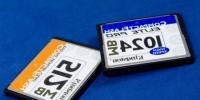How to take Glycine: instructions for use, reviews and indications
For their treatment, you can use "Glycine".
Composition, release form, packaging
The main chemical component is represented by glycine. Note the following excipients:
- methylcellulose (water soluble);
- magnesium stearate.
The tablets are sweetish, their color is white, there are elements of marbling. The tablets are placed inside blisters (50 pcs.). The plates are contained inside a cardboard box. There are also instructions for use.
Manufacturer
Released in Russia. Produces the drug LLC "Med Research and Production Complex" BIOTIKI ".
Indications for use
Issued at:
- decline in mental performance;
- the presence of organic, functional diseases of the nervous system, which are accompanied by increased excitability, emotional instability,. Also, the presence of consequences , ;
- stressful situations;
- deviant behavior, which are more common in children and adolescents.
Contraindications
Hypersensitivity to any component of "Glycine".
Interesting facts about Glycine in our video:
Mechanism of action
The main component is endowed with the following effects:
- increase in mental work;
- normalization of sleep;
- ease of falling asleep;
- decline in aggressiveness;
- reduction of psycho-emotional stress;
- decrease in the toxic effect that drugs have,. Usually toxic action is shown in oppression of function of TsNS;
- a significant reduction in the manifestation of brain disorders that occur in ischemic stroke, traumatic brain injury;
- reduction of vegetative-vascular disorders.
Regulates metabolism, has an activating effect on protective inhibition (in the central nervous system), contributes to its normalization, reduces psycho-emotional stress, increases mental capacity.
Glycine is capable of:

Instructions for use
It is used under the tongue, buccally. The dose is 100 mg. The drug is prescribed 1 tablet, should be taken 2-3 times a day. Therapy lasts approximately 14 to 30 days. This dose is indicated for healthy patients who have:
- decreased attention;
- psycho-emotional stress;
- mental retardation;
- decrease in mental work.
If organic, functional lesions of the nervous system are accompanied by emotional lability, irritability, sleep disturbances, the dosage changes:
- children under 3 years old are given 50 mg, which is equal to 0.5 tablets. The frequency, duration of administration is the same as in practically healthy people (2-3 times / day, 7-14 days). Then the child is given 50 mg once / day, 7 - 10 days;
- children from 3 years old, adults give 1 tab. / 2 - 3 times a day, 7 - 14 days. If necessary, the course of therapy is increased to a month. A month later, the therapeutic course can be repeated.
If you are concerned about sleep disturbance, the drug should be taken at bedtime (20 minutes before it), at bedtime. The dosage is 0.5 - 1 tablet.
If the patient has ischemic, it is necessary to use the drug buccally, sublingually (the first 3-6 hours). The dosage is 1000 mg. After that, you need to take 1,000 mg per day, 1 - 5 days. After this time, you need to take 1 - 2 tablets three times a day, 30 days.
In the field of narcology, the drug is used during remission with encephalopathy, the presence of organic lesions of the central nervous system, the periphery. You need to apply 1 tablet, 2-3 times / day, 14 - 30 days. If required, repeat the course 4-6 times a year.
Synopsis for Glycine:
Side effects
Overdose
There is no information in the manual. But experts say that an overdose of any medication has a bad effect on the body. In our case, the condition of patients who suffer from worsens. With severe hypotension, the patient will feel:
Adults and elderly patients are prescribed "Glycine" to improve mood, improve concentration, and support performance.
During pregnancy, it is prescribed so that the expectant mother protects herself from stress as much as possible. Tablets help to suppress nervous excitability. Pregnant women are discharged in the presence of NS disorders. Most often, expectant mothers are advised to use 1 tablet three times a day. The duration of therapy is affected by the health of the expectant mother.
drug interaction
A decrease in the manifestation of side effects from the following medications was noted:
- anxiolytics;
- sleeping pills;
- antiseptic (neuroleptics);
- antidepressants;
- anticonvulsants.




